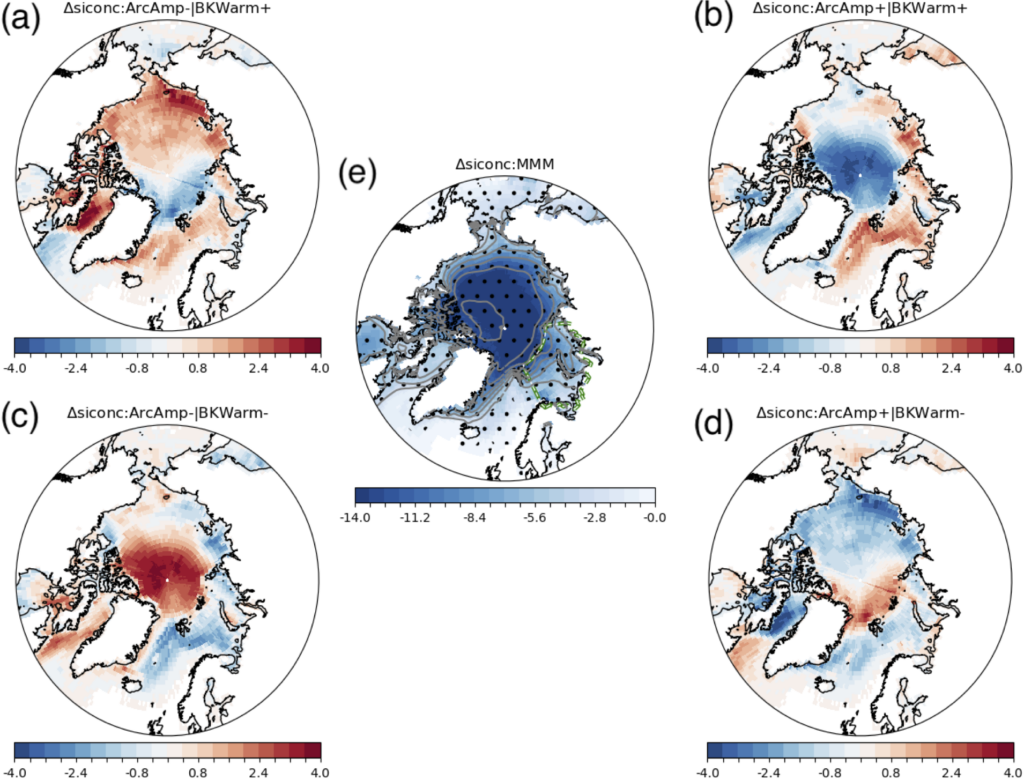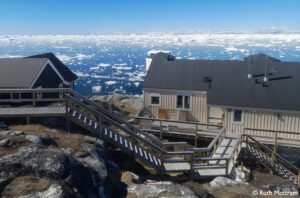Arctic Shipping Routes
With less sea ice, Arctic shipping routes will be more accessible, accelerating economic and political impacts on the region.
With a decrease in Arctic sea ice thickness and coverage, the potential of trans-Arctic navigation (e.g. Northern Sea Route, NSR) is expected to increase. Theoretically, the NSR provides roughly a 30 to 40% advantage in distance in the Europe-Asia-lane, compared to the Suez Canal route that is currently attracting the majority of commercial shipping. For the majority of the year, however, the advantage in distance is negated by the harsh conditions, including ice cover that limits the viability of the route. Outside the sailing season, which tends to last for a few months per year, the route is operable only with ice breaker escorts, or with heavily ice-classed vessels. As a result, sailing speed is drastically reduced and energy consumption is increased due to additional power needs. These, together, reduce the (economic) viability of the route, especially considering transit traffic.

However, as the sea-ice cover is shrinking, and thickness and duration are decreasing, the potential of the route is likely to improve. Gradually, the sailing season is expected to become longer and the conditions less harsh to enable a larger share of the commercial fleet to utilise the route. Even as the route selection is a multi-faceted decision, considering various factors in addition to commercial viability (for example geopolitics and trade policy), the increased potential of the route is most likely going to attract additional cargo volumes to the NSR. This as such might have both positive and negative impacts, as a shorter route would most likely decrease the GHG emissions of shipping, but at the same time, for example, increased black carbon emission would have negative impacts for the sensitive arctic area.
Storylines
In the last part of the project (Work package 6), we will make a long-term estimate on the potential increase of commercial shipping through the NSR, by combining two storylines selected from Work Package 1 with projected changes in the capacity and structure of the commercial fleet (e.g. icebreaking capacity), as well as the relevant economic, political, and environmental factors. Overall, we will estimate how the shipping volumes could increase as the shipping conditions improve, in slow, medium, and fast shrinking scenarios of the sea-ice cover and lengthening of the sailing season. While those fine estimates are yet to be provided by WP6, comparing storylines of Arctic climate change emerging from WP1 and their effect on sea-ice cover show large regional differences in the rate of sea-ice loss between storylines. For instance, we find contrasting changes in sea-ice loss rate over the Pacific and Atlantic sectors of the Arctic Ocean between storylines A and C; such changes will likely entail regional differences in the volume of Arctic shipping, in particular favouring either a NorthWest (storyline A) or NorthEast passage route (storyline C) between Europe and East Asia.


